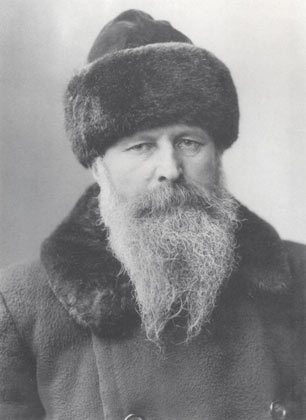The directory «Artists»
Vereshchagin Vasily Vasilievich
(1842—1904)

Being the son of a landowner of noble birth, Vasily Vasilievich Vereshchagin had to follow a military or diplomatic career and graduated from the Cadet School in St. Petersburg, but he could not overcome his passion for art and entered the Academy of Arts in 1860.
The Academy taught entirely on the principles of late Classicism, which dissatisfied the young man and, although he got a Minor Silver Medal for Ulysses Slaying the Suitors of Penelope he destroyed the painting saying that he would not paint such nonsense any longer, and left the Academy. The same year (1864) he entered the Academie des Beaux-Arts in Paris where he studied under the famous Jean Leon Gerom. But in the Paris Academie, too, classical standards and the practice of copying from the antique and the masterpieces of the past were predominant.
In search of new subjects Vereshchagin traveled to the Caucasus, where he created a series of sketches and studies, devoted to the life and customs of the natives. In 1867, he volunteered to the Russian army in Turkestan and participated in military actions against the Emir of Bukhara. For his bravery in the defense of Samarkand he got the highest military order of Russia – the Order of St. George. His ‘Turkestan series’ painted on the basis of sketches and studies done during the war, brought him fame. Rejoicing and Presenting the Trophies, in which Muslims demonstrate the cut heads of the Russian soldiers, are the most famous in the series. Many others were destroyed by the painter himself, when for his truthful depiction of the tragic fate of the Russian soldiers he was accused by Russian commanders in lack of patriotism. After that he left Russia for two years.
Scenes of Central Asian barbarism and death were staggering for the artist. Philosophical reflections over catastrophic consequences of all war are shown in his picture The Apotheosis of War (1871), a pyramid of sculls amidst the burnt desert, with the ruins of a city in the background. On the frame the painter wrote his dedication “to all conquerors, which were, which are, and those to come”. The picture is the artist’s condemnation of war.
In 1877-78, Vereshchagin took part in the Russian-Turkish war on the Balkan Peninsular. As was customary to him, Vereshchagin was always in the thick of the fray depicting battle scenes; he never eschewed danger and was severely wounded. Vereshchagin hated to see death, often pointless, of soldiers, be they Russians or Turks. Therefore he depicted both, never letting his patriotic feelings slide to mere nationalism or chauvinism. Unlike most contemporary battle pieces depicting war as a kind of parade, Vereshchagin’s paintings revealed its viciousness, showing soldiers as the most important element in war and the chief victim of it. In the Balkan series Vereshchagin was able to show some of the Russian commanders’ incompetence and lack of devotion, which resulted in a serious conflict with the government. Alexander II said that Vereshchagin was ‘either dirty scum, or a mad man’. The painter had to leave Russia again. He had successful exhibitions outside Russia, but both in Europe and in the USA the military authorities forbade soldiers and students of military schools to visit those exhibitions.
During his two trips to India (in 1872-74, 1882-83) he created his celebrated series featuring a variety of subjects, from skillfully done sketches of architectural monuments to deeply psychological portraits and genre scenes, the subject matter of some of them being oppression that resulted from the British colonial rule in India. A journey to Syria and Palestine in 1884 furnished Vereshchagin with a set of subjects from the New Testament treated rather unconventionally. The paintings were severely censured in Catholic countries and banned in Russia. At the exhibition in Vienna a religious fanatic poured acid and ruined two pictures The Holy Family and Resurrection.
It was not until the early-1890s that he could return to Russia and settle in Moscow. During the last 15 years of his life he worked on a series of paintings devoted to Napoleon’s disgraceful Russian campaign and the Russians’ courage in the war of 1812. In 1901-1903 Vereshchagin traveled to the Philippines, USA, Cuba, and Japan. His work on Japan series was interrupted by the Russian-Japanese war.
Partisan of peace, Vereshchagin died a death of a soldier; he perished with the sinking of the flagship Petropavlovsk, on April 13, 1904 during the Russian-Japanese war
Ajman, 1971, Napoleon in Petrovsky Palace
Russia, 1992, «Don't Touch, Let Me Approach»
Sharjah, 1970, Napoleon Bonaparte
Sharjah, 1970, Napoleon Bonaparte. Battle of Jena
Yemen (Kindom), 1969, Napoleon in Petrovsky Palace
Yemen (Kindom), 1969, Napoleon in Petrovsky Palace